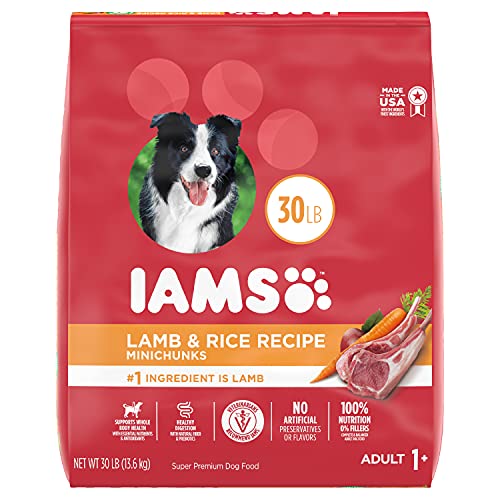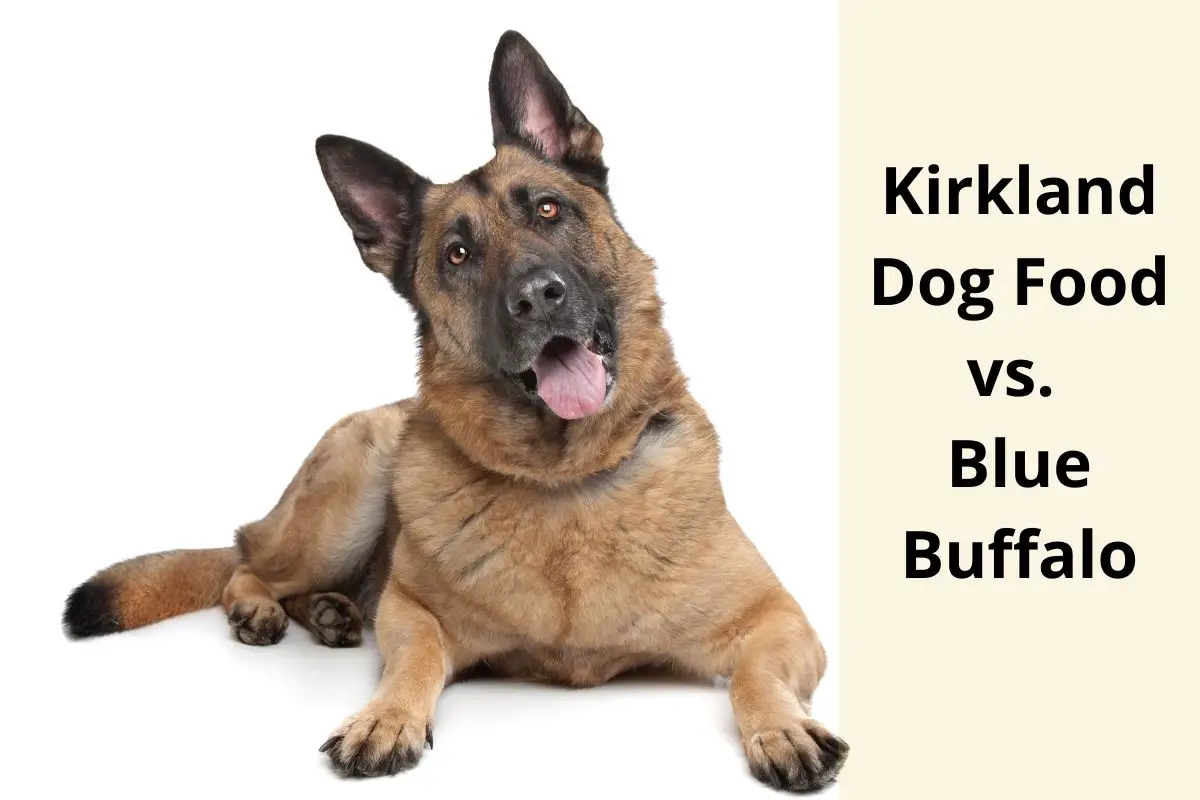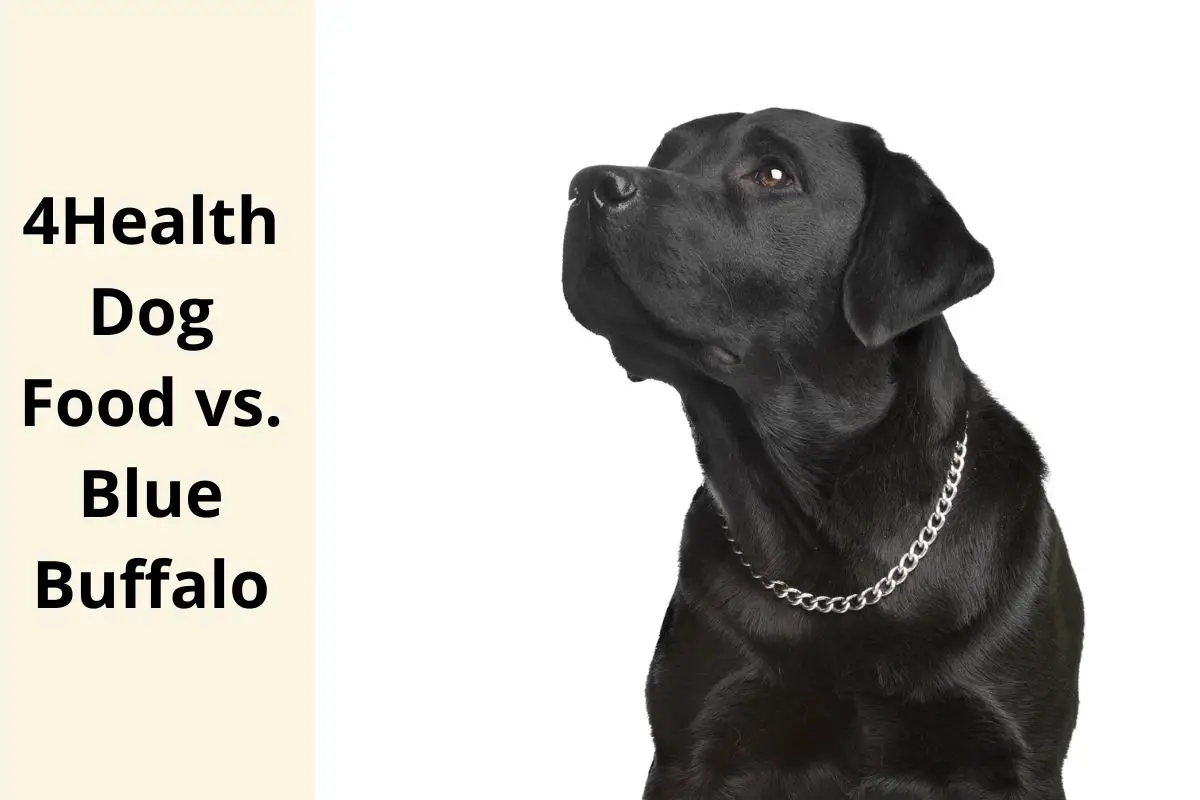This post contains affiliate links.
Your furry friend is part of your family, and, therefore, feeding them well is paramount. A good diet for your dog should consist of protein and other nutrients because it has several benefits. Dog food comes in different proteins from various sources, including chicken, lamb, and beef, but is lamb or chicken better for dogs?
Lamb vs. chicken in dog food differ in terms of their advantages and disadvantages. While chicken dog food provides energy and improved joint health, lamb provides a better balance of Omega 3 fatty acids. But they are both beneficial to a dog’s health, depending on your dog’s preference.
Do you have a dog and wonder how best to feed him? This article will discuss chicken and lamb in dog food and their comparison, as well as an overview of lamb dog food and chicken dog food, to better understand both meals.
Table of Contents
An Overview of Chicken and Lamb Dog Food
Lamb dog food has gained popularity recently and has become an excellent option for dogs that want a break from the more popular beef or chicken dog food. Lamb is also ideal for dogs with allergies and food sensitivity issues, and if your furry friend is a picky eater, lamb dog food may be just what he needs.
On the other hand, chicken dog food is lean meat and is a great source of protein needed to keep dogs strong and healthy. Chicken has been in the dog food industry for a long time, unlike lamb food.
This meat is a perfect protein option in your dog’s food unless your pup is allergic to it.
Moreover, if your dog has excess weight, chicken proteins can help them maintain or lose weight since it is low in calories and fat. Dog food that contains chicken has glucosamine, a component that helps in cartilage tissue building and keeps your dog active and healthy for a long time.
Let’s take a closer look at the pros and cons of lamb and chicken in dog food.
Pros of Chicken Dog Food
Most dogs can tolerate chicken in their meals, and it is a relatively cheap protein. Let’s take a closer look at the benefits of chicken in dog food.
Good Source of Energy
One of the benefits of feeding your canine friend with chicken is that it’s a good energy source.
Dogs are usually very active and use a lot of energy, so one of the best ways to restore the energy is by feeding them food that has some chicken. Any excess protein they eat will be used for building and maintaining the dog’s muscle tissues and health.
Provision of Omega 6 Fatty Acids
When you feed your dog chicken, their skin will greatly benefit. Chicken dog food provides Omega 6 fatty acids. These fatty acids increase the permeability of the dog’s skin, thus reducing the chances of the dog being infected or becoming itchy.
The fatty acids also ensure the dog’s coat remains shiny and always appealing.
Great Source of Amino Acids
Protein-rich food provides essential amino acids for your dog, and chicken is one of these kinds of food. Your dogs get at least 10 out of the 20 amino acids by eating chicken. Some of the most popular dietary sources of essential amino acids are animal proteins, and chicken contains the highest content compared to other animals.
Improved Joint Health
If your dog has joint or arthritis problems, chicken food can help with the healing process. Chicken feet, in particular, have high concentrations of chondroitin and glucosamine. These are great joint supplements for improving the joint health of dogs suffering from arthritis and any other bone-related issue.
Cons of Chicken Dog Food
Chicken can also have drawbacks for your dog, especially if he has allergies or sensitivities to it. It also might contain a high level of contamination. Let’s talk more about these issues.
Not Best for Dogs With Food Sensitivities or Allergies
Most dogs also like chicken, just like humans, but it might cause some digestive problems, some of which might have severe side effects in the short or long term. For this reason, you should not ignore these issues.
Most of these allergies occur if your dog has an abnormal high defensive protein reaction. The allergies could appear the first time you feed your dog with a particular protein or after a while.
You can watch for several symptoms that tell your dog is having an allergic reaction to chicken in dog food. In some dogs, the allergies can be quite severe, causing inflammation in the throat.
Other common signs of protein allergies in dogs include:
- Diarrhea
- Restlessness
- Runny nose
- Skin rash
- Watery eyes
- Facial swelling
- Shock
- Incoordination
- Lesions on the skin
- Salivation
- Abdominal pain
- Watery eyes
- Sneezing
It’s advisable to see a vet if you notice any of these symptoms in your furry friend.
High Contamination
If you feed your dog raw chicken, it will have a high risk of salmonella contamination. If these pathogens get to the dog’s digestive tract, they will cause an infection. Some of the symptoms of the infection are loss of appetite and diarrhea.
It’s, therefore, advisable to cook the chicken dog food first before feeding your dog.
Pros of Lamb Dog Food
Lamb has always been a staple in Mediterranean cooking, but only recently it’s become a lot more popular in the US. Dog food manufacturers are cashing in on this trend by formulating their dog food with lamb and other unique proteins. Let’s now discuss this more in detail.
Great for Dogs With Food Allergies
Lamb is an excellent alternative for dogs with food allergies. Most dog foods used to contain either beef or chicken, so it’s common to find that the meat your dog has been allergic to is chicken.
Based on this, lamb, which is a new type of dog food on the market, can be used as an alternative protein source. Once you have ruled out which particular food is causing your dog’s allergy, you can try the lamb.
Since not many dogs are exposed to it, it’s less likely to cause allergies.
Rich in B Vitamins
Lamb is one of the best sources of B vitamins, including Vitamin B12, which help brain function and blood formation. Besides the vitamins, lamb contains iron, zinc, Niacin, Selenium, phosphorus, and other essential minerals that keep them healthy.
Great Taste
If your dog doesn’t like chicken, you can try lamb instead. It has a good flavor, a rich smell, and can create the right feeding mood for your dog. Wet lamb dog food is often more appealing to dogs than dry because it’s easier to eat and swallow, which means that it doesn’t pose any choking risks.
Great Protein Source
Lamb is also a great source of protein, and it helps create, heal and maintain muscle tissues. The protein found in lamb is also incorporated in forming antibodies and hormones and supports the dog’s immune system. Additionally, lamb has a greater concentration of essential minerals.
Contains Omega 3 Fatty Acids
Lamb also has a high content of Omega 3 fatty acids that help with brain development in puppies and boost your canine’s heart and kidney health. Additionally, Omega 3 fatty acids are great for fighting cancer in dogs by boosting the overall immune system.
Helps Dogs Have Better Bowel Movements
If you are a pet parent and have noted your dog has difficulty pooping at some point, lamb can serve as an excellent solution to this problem. If the lamb used in the dog food is lean, it will reduce the volume of poop that your dog excretes and your pooch will not strain when pooping.
Lamb can also prevent constipation because it has fibers that keep the digestive system perfect.
Cons of Lamb Dog Food
While lamb in dog food is highly beneficial, there are still some drawbacks that it has. Let’s look at them now.
Highly Priced
Compared to chicken and beef, lamb meat is expensive.
One of the reasons for its high price is because most of the meat is from lambs that are not factory-farmed, but reared on farms, thus the need for staff to take care of them.
The other reason for the price is transportation costs from the lamb farmer to the butcher.
High-Fat Content
Lamb has high amounts of fat, unlike chicken. Therefore, if some of this fat has not been removed from the lamb meat, there will be an even higher fat content in the dog food. Therefore, lamb might not be the best meal if your canine friend is inactive. In that case, it’s advisable not to feed your dog lamb daily.
Which Is Best for Your Dog? Lamb or Chicken?
Between lamb and chicken, the meat that’s best for your dog depends on their dietary needs, energy levels, allergies, age, and preferences. The answer to what is best for your dog is not straightforward and may take a lot of trial and error.
Lamb in dog food may be a better option for dogs with food sensitivities or allergies triggered by chicken. If you have doubts, it is wise to consult a veterinarian and have your dog fed the best.
But apart from food sensitivities and allergies, it’s important to consider which is easier to digest between chicken and lamb in dog food. Proteins are different, and so is their digestibility. Both chicken and lamb are easy to digest because they are muscle proteins with a digestibility of 92%.
The other proteins with a higher digestibility level are the ones that come from organs like the liver, heart, and kidney.
Is Chicken or Lamb Better for Dogs Whose Stomachs Are Sensitive?
Compared to other proteins, chicken is likely to trigger sensitivity in the dog’s stomach. Chicken and beef have been the most common proteins in dog foods. Therefore, lamb being a more novel meat in dog food, fewer dogs are exposed to it, so fewer are likely to show sensitivity.
If you have been feeding your dog a chicken diet and notice that it’s developing stomach sensitivity issues, you should consider switching to a lamb diet to resolve the sensitivity problems.
Lamb vs. Chicken in Dog Food For a Dog’s Skin
Both lamb and chicken are ideal for a dog’s skin. The two sources of proteins feature components that play different roles in the skin health of your canine companion.
- Lamb dog food: Being red meat, lamb has plenty of vitamins and minerals that encourage muscle development and boost dogs’ optimum skin and coat health.
- Chicken dog food: It has omega 6 fatty acids that always keep your dog’s skin shiny. However, do not feed your dog chicken dog food if it has some chicken-related allergies.
Can Dogs Eat Lamb Dog Food Every Day?
Dogs cannot eat lamb dog food every day. Lamb has a high-fat content that might cause your dog to be obese, more so if it’s aged, sick, or not active. If your dog eats it every day, it might make him sick.
Before feeding your dog lamb every day, you should consider several factors, including age, breed, and how active your dog is.
Can Dogs Eat Chicken Dog Food Every Day?
Dogs can eat chicken dog food every day because it’s a great source of proteins. However, you should not rely on it alone. Your dog needs vitamins and minerals from other food sources, so you should give it balanced food.
This way, their health, and nutrition will always remain balanced.
Best Lamb Dog Food Products
If you’re looking for high-quality dog food containing lamb, take a look at our recommendations from Amazon.com.
Hill’s Science Diet Dry Dog Food
This lamb dog food will meet the energy needs of your dog. Hills Science lamb meat is also a good source of chondroitin and glucosamine, both of which are ideal for your dog’s joint health. The food also has vitamin E and fatty acids, which come in handy for your dog’s skin.
IAMS Lamb & Rice Recipe Minichunks
This meal is made of premium lamb, and it’s perfect for healthy digestion because it has prebiotics and fiber. Additionally, IAMS is a strong protein source, which builds strong muscles. Most veterinarians recommend this lamb dog food because it has all the nutrients for your dog.
Best Chicken Dog Food Products
However, if you prefer dog food made with chicken, look no further than our recommendations, all of which can be found on Amazon.com.
Rachael Ray Nutrish Real Chicken & Veggies Recipe
You have every reason to purchase this dog food, thanks to its quality and well-cooked ingredients. The food is also natural and rich in essential minerals and vitamins, including potassium chloride, zinc, iron, Niacin, and Riboflavin supplement.
The best part of this meal is that it’s made from farm-raised chicken. Unlike most commercial chicken dog food, Racheal Ray Nutrish is poultry meat with no additives, colors, or artificial flavors.
Canidae All Life Stages Multi-Protein Formula
If your dog has had skin or coat problems, this dog meal will solve them effortlessly. It has enough proteins needed for promoting the skin coat and skin and has the right formulas for your dog’s digestive and gut health.
The meal is also great for food sensitivities.
The other benefit of Canidae Premium Dry Dog Food is that it’s ideal for your canine companion at all stages of life. A diet change won’t be necessary whether your dog is a puppy, a senior dog, or an adult dog.
Conclusion
Both chicken and lamb are excellent sources of proteins for dogs. They also provide other essential nutrients and minerals that help dogs grow well. However, whether you feed your dog lamb or chicken, consider its dietary needs more and consult a veterinarian for guidance.
Mrdogfood.com is a participant in the Amazon Services LLC Associates Program, an affiliate advertising program designed to provide a means for sites to earn advertising fees by advertising and linking to Amazon.com. We also participate in other affiliate programs which compensate us for referring traffic.








